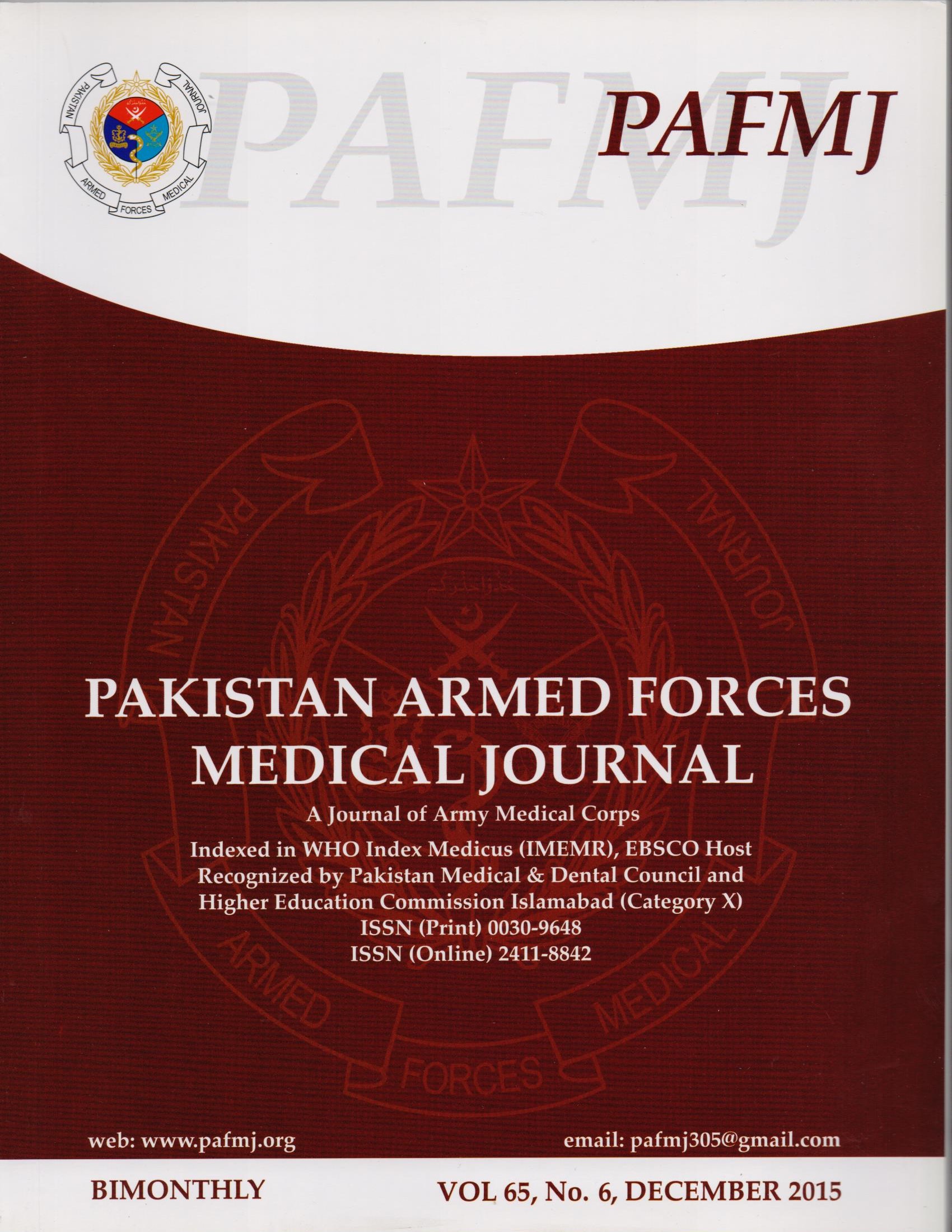METABOLIC SYNDROME IN SOLDIERS OF ARMED FORCES
Metabolic Syndrome in Soldiers
Keywords:
Abdominal obesity, Diabetes Mellitus, Body Mass index, HypertensionAbstract
Objective: To determine frequency of metabolic syndrome and its components amongst soldiers of Armed Forces.
Study Design: Descriptive cross sectional.
Place and Duration of Study: Medical department, Okara CMH, October 2012to March 2013.
Patients and Methods: Our study included 2187 male soldiers. Age ranged from 20 to 52 years. Detailed history and examination of all the participants was done. Body mass index (BMI), waist circumference (WC) and blood pressure (BP) of each subject were recorded. BMI > 25 kg/m² and WC > 90 cm was considered obesity and abdominal obesity respectively. BP > 130/85 mmHg defined as hypertension. Blood glucose fasting, HDL cholesterol and triglycerides levels were checked in all participants. SPSS version 16 was used to analyzethe data. p value of less than 0.05 was considered statistically significant.
Results: In our study, 783 participants (35.8%) were found to have abdominal obesity.Overall 491 (22.5%) soldiers had metabolic syndrome out of which 438 (89%) were physically inactive. Frequency of metabolic syndrome was 31.7% ( 156 out of 491) in age group 20 to 36 years while 68.3%( 335 out of 491) in 37 to 52 years of age. Hypertriglyceredemia was present in 504 (23%), low HDL cholesterol in 496(22.6%), hypertension in 210 (9.6%) and abnormal glycemic control in 197 subjects (9%).
Conclusion: A large number of Army soldiers are suffering from metabolic syndrome. Its frequency is increased with increasing age, weight and physical inactivity.Patientswith previous history of diabetes or hypertension were 4 times at risk of developing Metabolic Syndrome as compared to others.











